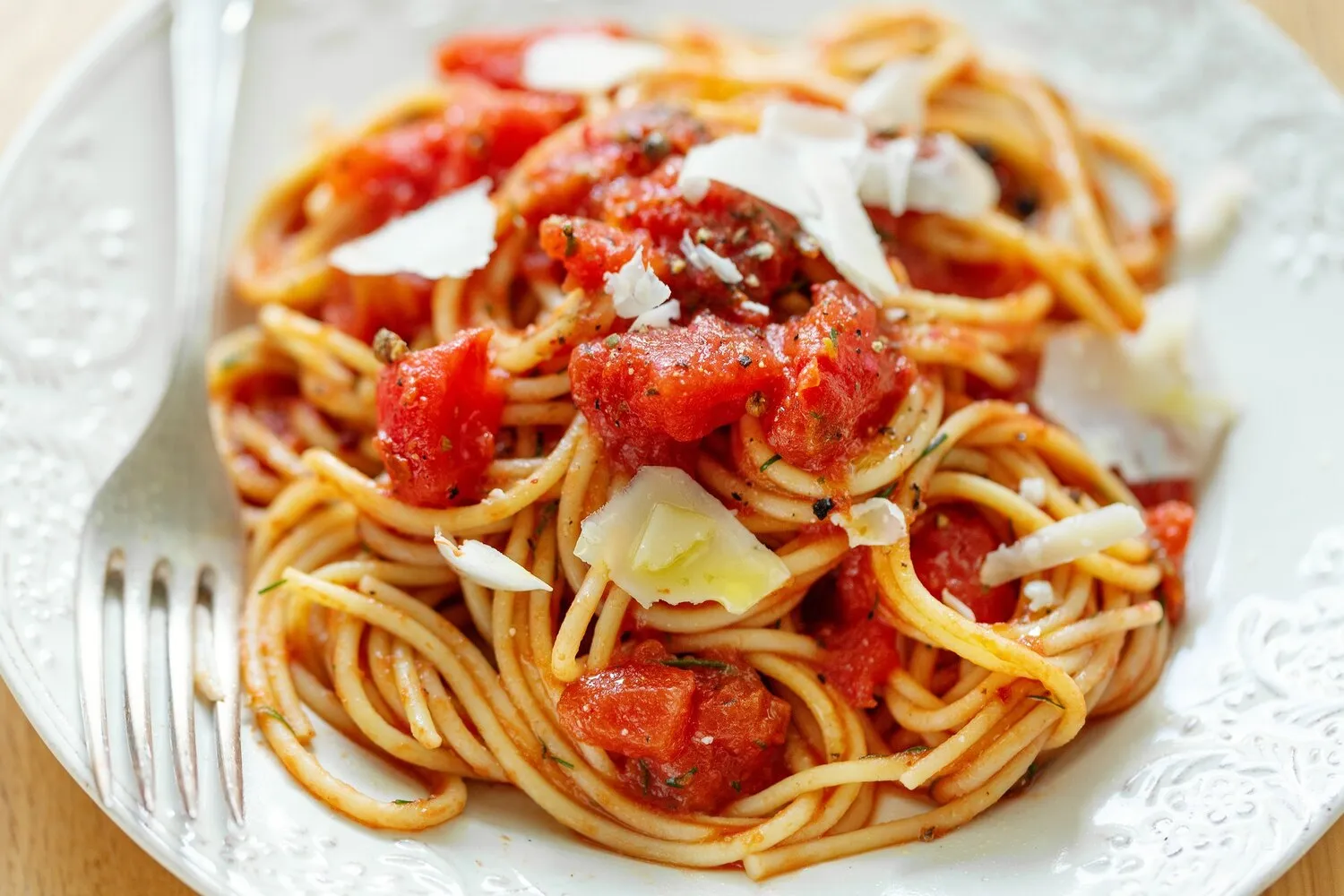
Amatriciana
Traditional Roman pasta dish with guanciale, tomato sauce, Pecorino Romano cheese, and black pepper.
Nutrition Facts
* The % Daily Value (DV) tells you how much a nutrient in a serving of food contributes to a daily diet. 2,000 calories a day is used for general nutrition advice.
Amatriciana's roots lie in the town of Amatrice, located in the mountainous region between Lazio and Abruzzo. It evolved from 'pasta alla gricia', a simple pasta dish with guanciale and Pecorino Romano. The addition of tomatoes marked the birth of Amatriciana, likely influenced by the increasing availability of tomatoes in the region during the 18th and 19th centuries.
Amatriciana is a beloved staple of Roman cuisine and holds a significant place in the region's culinary identity. It represents a simple yet flavorful expression of local ingredients and traditions.
Roman Staple
Amatriciana is considered one of the four classic Roman pasta dishes, alongside Cacio e Pepe, Carbonara, and Gricia. It's a common sight on restaurant menus throughout Rome and Lazio.
Amatrice's Legacy
The town of Amatrice, the dish's namesake, suffered a devastating earthquake in 2016. Amatriciana became a symbol of resilience and solidarity, with chefs worldwide donating proceeds from Amatriciana dishes to earthquake relief efforts.
Family Traditions
Amatriciana is often prepared and enjoyed at home, passed down through generations of families. Variations in recipes and techniques reflect regional and familial preferences.
Amatriciana offers a robust and savory flavor profile, with a balance of rich pork fat, tangy tomato acidity, salty cheese, and a touch of peppery spice.
The dominant flavor comes from the guanciale, cured pork jowl, which renders its fat and imparts a rich, salty, and slightly sweet pork flavor. The tomato sauce adds acidity and sweetness, complementing the pork. Pecorino Romano contributes a sharp, salty, and sheepy cheese flavor, while black pepper provides a subtle heat and aromatic complexity.
Guanciale is Key
Guanciale is crucial for the authentic flavor; do not substitute with pancetta or bacon. Guanciale has a higher fat content and a distinct flavor that distinguishes Amatriciana.
Pecorino Romano Only
Use only Pecorino Romano cheese, not Parmesan or other cheeses. Its sharp, salty flavor is essential to the dish's character.
Tomato Variety
San Marzano tomatoes are preferred for their sweetness and low acidity, but other good-quality canned tomatoes can also be used. Avoid overly acidic tomato products.
Pasta Choice
Bucatini is the traditional pasta shape, but spaghetti or rigatoni can also be used. The pasta should be cooked 'al dente' to maintain its texture.
Explore additional Italian dishes and restaurants
Explore ItalianDiscover top dining spots and culinary experiences in Roma.
Explore RomaLearn more about the food culture, restaurant scene, and culinary heritage of Italy.
Explore Italy
